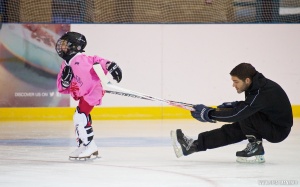| “
|
In any other context, 'icing' is a great and exciting word: The proverbial icing on the cake, for instance, is a bonus - a wonderful thing on top of another wonderful thing. But in hockey, icing merely results in the referee raising his right hand...
|
”
|
| —Steve Rushin
|
Different contexts can affect communication, and can sometimes lead to communication efforts being misunderstood. The context or circumstances surrounding the communication might include your audience, location, cultural beliefs, timing, the choice of words used, and many other factors.
We're going to look at five types of communication context: Intrapersonal, Interpersonal, Group, Public, and Mass communication. Before you look at the reading below, have a think about what these different communication contexts might be, and how they affect communication choices.
Read Business Communication for Success: Section 1.3 Communication in context" (pp. 22-26).
This reading introduces intrapersonal, interpersonal, group, institutional, and mass communication contexts, their advantages and disadvantages, and appropriate and inappropriate uses. Remember, each context influences the communication process differently, and contexts can overlap.
Recommended: Do the first three chapter exercises, which invite you to reflect on your experiences of group and peer communication. Also, in this modified version of exercise four, please track how many mass communication messages you observe in a one-hour period of Internet surfing.
Reflection focus questions: In which context do you think an audience would defer least to the speaker? Which context is most characterized by intimacy, and which by teamwork? Did the mass communication message tracking exercise increase your awareness of these kinds of messages, and if so, in what ways? Please share your observations on the last exercise in your learning journal and make a comment about your reflection in WENotes.
Note: Your comment will be displayed in the course feed.
